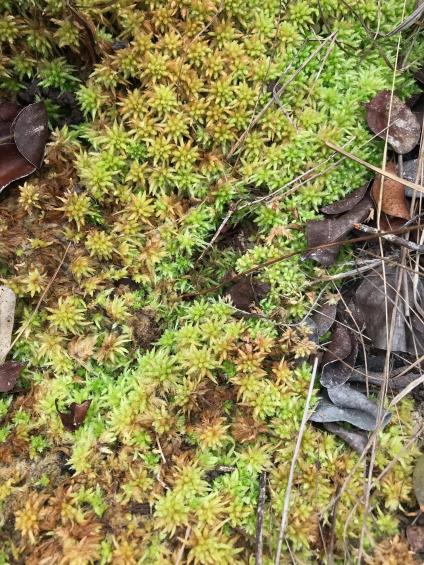Peat moss species thought extinct, found thanks to Bryophyte survey
PUERTO RICO – A species of peat moss (Sphagnum), believed to have disappeared from Puerto Rico more than 35 years ago, was recently found in an area of siliceous sands of the municipality of Vega Alta by Dr. Amelia Merced. Merced is a project researcher for the "Sphagnum Project," led by herself and Dr. Tamara Heartsill, and supported by the International Institute of Tropical Forestry and its State and Private Forestry unit.
The discovery, earlier in February, provided encouraging results about the possibility of finding other populations and missing species. This discovery is crucial for the scientific community in the island, as information about habitat and ecological conditions that support sphagnum species might yield important insights for proper management, improving forest and ecosystem health, and conservation in Puerto Rico. With this finding, the island regains a species of the most important genus that significantly contributes to reducing the accumulation of terrestrial carbon.
The population of peat moss (Sphagnum) found by Merced is part of the populations last found 35 years ago (S. perichaetiale). In the early 1900 (up to 1927) S. perichaetiale and S. trinitense grew on the island’s northern coastal plains and Laguna Tortuguero, but after that time there are no other records of their existence. Some of the early collections were made by Elizabeth Britton from the New York Botanical Garden, and fortunately, specimens from her collection are stored at the University of Puerto Rico’s Botanical Garden Herbarium in San Juan, PR. Collections from herbaria are critical for understanding past and present distribution of plant species.
The other peat moss present in the island is S. portoricense, with several populations located in the protected areas of El Yunque National Forest, although they can still be threatened by human activities. These two species, S. perichaetiale and S. portoricense, will be included in the list of Critical Elements in the Natural Heritage Program of the Puerto Rico Department of Natural and Environmental Resources.
The project, that started in 2017, emphasizes the role that epiphyte and bryophyte vegetation play in supporting arthropod and invertebrate fauna. The researchers also assisted in developing adaptive management guidelines for montane wetland and cloud forest vegetation communities within and outside of El Yunque National Forest. The project shows how bryophytes are critical components in the indicators of forest health, both in El Yunque and in urban forests.
Within the forest types of El Yunque, cloud forests stand out when compared with other forest types in terms of the abundance of epiphytes, including liverworts and mosses (Bryophyta). El Yunque/Luquillo Experimental Forest contains more than one-half of Puerto Rico’s moss flora. However, the role of epiphytes and bryophytes in maintaining unique ecosystems, and as forest health indicators, is severely under-documented. One of the main goals for this project is creating educational materials for public identification and protection of the species through its inclusion in forest management plans.


